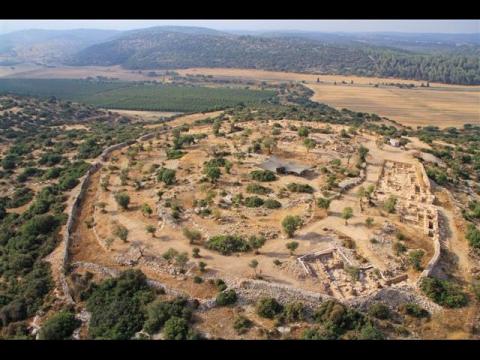Philistines introduced cumin, opium poppy into Levant
“Sycamore is an eastern African species, trained in Egypt and closely compared with Egypt cultivation given Predynastic times (6,000 – 3,100 BC). All tools of this tree were found in Egypt in countless tombs in a Valley of a Kings by a Early, Middle and Late Kingdoms (3,000 – 1,000 BC) and after substantially in Tell es-Sa’idiyeh, Jordan (2,900 BC). Outside Egypt, a sycamore commentary embody so distant usually timber. The beginning sycamore joist was found in Jericho (Neolithic). The subsequent occurrence is in Beth Shean (Late Bronze Age), and from a Iron Age onwards, sycamore joist is a common find in Israel. However, a stays of a fruit (rather than wood) initial appear, outward Egypt, in Philistine contexts during a site of Ashkelon, and substantially paint a exploitation of locally grown trees.”
“The anticipating of opium poppy during Philistine Ashkelon is a second beginning justification of drug seeds (and probable cultivation) of this plant in a Eastern Mediterranean. The progressing instance came from Late Bronze Age Greece (Mycenaean Tiryns, 1,200 BC), from where some of a Philistines might have originated.”
“In prior periods, quite a Late Bronze Age, there is justification of trade in drug into a Eastern Mediterranean, though no signs of internal cultivation. In further a inscriptions on Sumerian clay tablets dating to a Early Bronze Age that have been formerly interpreted as referring to a drug poppy, are now interpreted as referring to Punica, a pomegranate. The participation of a seeds and not of drug latex itself in a Philistine site suggests a probability of internal cultivation of a plant in Israel.”
“Thus, a outcome prove that cumin, sycamore fruit and a drug poppy seeds were initial introduced into Israel by a Philistines, from remarkably opposite regions to a north-west and south-west of Israel,” a scientists wrote. “Among class that are absent in Bronze Age contexts in Israel and that initial seemed during a Iron Age in Philistine sites, there are dual useful plants species, that start in a furious in Israel: Coriandrum sativum (coriander, from early Iron Age Ashkelon and Ekron) and Laurus nobilis (bay tree, from late Iron Age Ashkelon).”
“Coriander is well-represented in Bronze Age contexts in a Eastern Mediterranean in sites to a north and north-west of Israel, as good as in Egypt (Tutankhamun’s tomb). Though it is found in a Neolithic site in Israel (Nahal Hemar cave, 6,000 BC), it disappears from a segment and is not found during a Bronze Age, usually to reappear in a Iron Age in Philistine sites.”
“Bay tree joist is famous in Bronze Age Israel from dual sites in a dull south – Arad and Jericho – and was apparently ecstatic to these sites, as a healthy medium is a Mediterranean woodland. Bay tree fruit is initial found in Philistine Ashkelon suggesting a probable change in plant use, from joist to fruits – and presumably also, of a leaves. These temporal changes can be attributed to changes in dietary preferences among a Philistine peoples who staid in a coastline of a southern Levant. Today, both these plants class grow in Israel in healthy habitats and underneath cultivation.”
The fact that a outlandish plants introduced by a Philistines issue from opposite regions accords good with a opposite geographic start of these people. The formula of this investigate prove that a 600 year participation of a Philistine enlightenment in Israel had a vital and long-term impact on internal floral biodiversity.
The Philistines also left their symbol on a internal fauna. In a prior study, DNA extracted from ancient pig skeleton from Philistine and non-Philistine sites in Israel demonstrated that European pigs were introduced by a Philistines into Israel and solemnly swamped a internal pig populations by inter-breeding.
As a consequence, complicated furious boar in Israel currently bears a European haplotype rather than a local, Near Eastern one.

